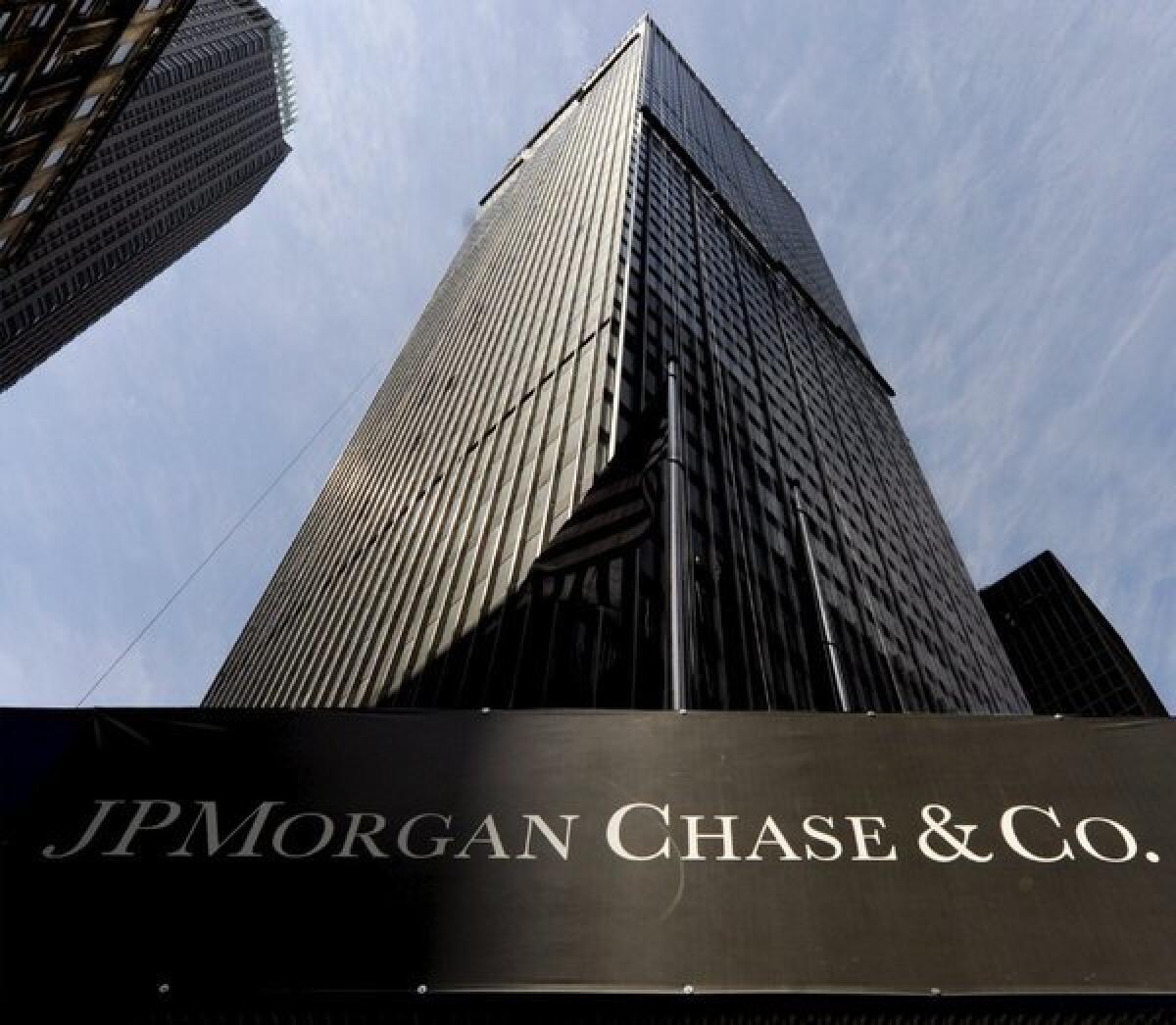How JPMorgan (sort of) copped to mortgage fraud -- and won

- Share via
The “statement of fact” -- that narrative document that lays out what a corporate defendant has done wrong, without actually mentioning anything that could hurt the corporation in court -- has become our generation’s big new literary genre. The statement accompanying JPMorgan Chase’s $13-billion legal settlement this week is a perfect example of the form.
Like most such narratives, it’s notable more for what’s hidden between the lines than for what’s on the page, as in a novel by Joseph Conrad. The obscure verbiage of the document, in fact, is designed to extract what seems to be a confession of guilt by JPMorgan without it being the kind of confession that can be used against JPMorgan in any further court cases.
That’s why the same document can allow New York Atty. Gen. Eric Schneiderman to assert that “JPMorgan acknowledges that it regularly misrepresented to RMBS [residential mortgage-backed securities] investors that the mortgage loans in various securities complied with underwriting guidelines,” and Bloomberg columnist Jonathan Weil to reply, “The statement of facts included no such acknowledgment by JPMorgan.”
Can they both be right? By the bizarre rules of the genre, the answer is yes. What that means, in the real world, is that JPMorgan wins.
So in the name of 21st century literary criticism, let’s deconstruct this particular text.
The statement’s main theme concerns JPMorgan’s sale of mortgage-backed securities to investors, including pension funds acting on behalf of their working-class members. The securities comprised pooled mortgages, and their values were based on the quality of those loans. The factors included the accuracy of the property appraisals, the borrowers’ income statements and the level of documentation thereof.
What the statement makes plain is that JPMorgan systematically lied about those factors, that its own staff knew about the misrepresentations and brought them to the attention of executives, and the bank sold the securities to unsuspecting buyers anyway.
Before purchasing loans to package into its securities, Morgan’s staff was expected to perform “due diligence” on the loans to verify that they conformed to the standards their sellers claimed. (The sellers included such notorious mortgage mills as Countrywide Home Loans.) Morgan’s people were supposed to confirm that the appraisals were accurate and that they were legal -- in other words, that they weren’t fraudulently made. But as the statement outlines, Morgan learned that many of the loans didn’t meet those standards. Morgan promised its customers that no loans like that would be included in the pools. It included them anyway.
Morgan’s assurances to investors that it performed “thorough due diligence” were “often scripted” by its sales departments. But it outsourced some of this due diligence to contractors, which sometimes reported back to Morgan that some of the loans were substandard, including numerous loans missing needed documentation of appraisals and borrowers’ income and employment.
Some loan balances were higher than the value of the homes. Some were based on borrowers’ income claims that were obviously inaccurate. Morgan “waived” numerous such loans into the pools, sometimes with bulk waivers that meant the questionable mortgages weren’t individually scrutinized. Sometimes this was done at the last minute before the securities were offered to investors.
One of the due-diligence firms told Morgan that of its sample of 23,668 loans, 27% percent (6,238) were substandard (“Event 3” loans, in industry parlance.) Morgan “waived” half of them into its securities. At one point, Morgan staff concluded that several loan packages from a single seller were full of “stated income” loans (where the borrower’s income isn’t verified) in which the borrowers had overstated their income. The Morgan employees decided that every mortgage in the pools should be double-checked and the suspect loans rejected. Morgan executives overruled them.
“None of this was disclosed to investors,” according to the statement of facts.
There’s more, but you get the gist. Morgan claimed that it thoroughly checked out the loans it was packaging into securities and selling to investors. This wasn’t true. It claimed that it weeded out loans that didn’t meet standards. This wasn’t true. Does this sound like fraud?
JPMorgan acknowledged in its settlement that the assertions in the statement are true. Here’s how the bank’s chairman and chief executive, Jamie Dimon, characterized its position: “We did not admit to a violation of the law.”
The sad fact is, he’s got a point. That $13-billion settlement looks more like a bargain for JPMorgan every day.
More to Read
Sign up for our Book Club newsletter
Get the latest news, events and more from the Los Angeles Times Book Club, and help us get L.A. reading and talking.
You may occasionally receive promotional content from the Los Angeles Times.











